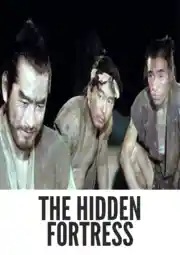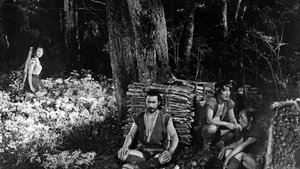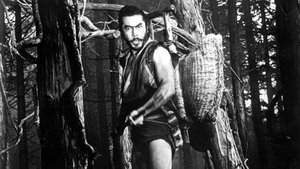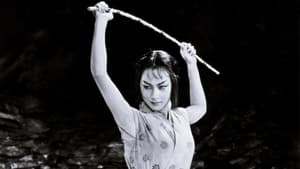Contact: [email protected]
Video Sources 0 Views

Synopsis
[ez-toc]





Introduction
In the realm of cinema, where innovation meets nostalgia, the process of colorizing old movies has become a captivating trend. Among the classics to undergo this transformation is the timeless masterpiece, “The Hidden Fortress Colorized,” directed by the legendary Akira Kurosawa. This article delves into the historical landscapes of feudal Japan, guided by the genius of Kurosawa and the iconic performances of Toshiro Mifune. Through the lens of “The Hidden Fortress Colorized 1958,” we explore the intricate process of colorization, unraveling its impact on the viewing experience and the perpetual debate surrounding film restoration.
“The Hidden Fortress Colorized” stands as a testament to the genius of Akira Kurosawa, a name synonymous with Japanese cinema. His collaboration with the legendary Toshiro Mifune has produced gems that withstand the test of time, with “The Hidden Fortress Colorized” being a standout example. The film skillfully weaves together elements of adventure, humor, and drama, showcasing Kurosawa’s mastery in storytelling and Mifune’s charismatic on-screen presence.
Read Media File Transfer Agreement: Terms and Conditions
Read FAQ
Revisiting a Feudal Tale: The Story of The Hidden Fortress
Transporting us to the feudal landscapes of Japan, “The Hidden Fortress” paints a vivid picture of samurai tradition and social hierarchy. Released in 1958, the film provides a window into a bygone era, where honor and treachery mingled against the backdrop of war-torn landscapes. Princess Yuki, played by the talented Misa Uehara, sets the stage for a captivating narrative. Alongside General Makabe Rokurōta, portrayed by Toshiro Mifune, and two bumbling peasants, Tahei and Matashichi, the film unfolds as they navigate enemy territory with a hidden treasure.
The narrative’s depth and character dynamics showcase Kurosawa’s ability to seamlessly blend adventure with cultural nuances. As the unlikely companions embark on their journey, the film explores themes of loyalty, class distinctions, and the transformative power of shared adversity. Kurosawa’s meticulous attention to detail and his ability to infuse authenticity into the narrative contribute to the film’s enduring legacy.
The Significance of Colorization in Restoring Old Films
The art of colorization is a delicate process that breathes new life into old movies, offering audiences a chance to experience classics in a vibrant spectrum. From traditional hand-coloring techniques to modern digital restoration processes, the journey to bring black and white films into color is a fascinating one. Colorization aims to bridge the gap between the past and the present, making old classics more accessible to contemporary audiences.
However, the debate surrounding the colorization of old movies is a nuanced one. While colorization enhances visual aesthetics and introduces new dimensions to storytelling, purists argue that it compromises the historical authenticity of the original work. Striking a balance between preserving the artistic integrity of the filmmaker’s vision and catering to the evolving tastes of audiences remains a constant challenge in the realm of film restoration.
Colorful Visions: Experiencing The Hidden Fortress in a New Light
Enter “The Hidden Fortress Colorized 1958,” a version that transforms Kurosawa’s black and white masterpiece into a colorful canvas. The impact of color on storytelling takes center stage as audiences witness scenes infused with new life. The lush landscapes of feudal Japan, the intricate details of samurai armor, and the vibrant costumes of the characters come to life in a way that adds a layer of richness to the viewing experience.
The colorization team’s meticulous work becomes evident as they capture the intended atmosphere and mood through carefully chosen color palettes. The play of light and shadow, a hallmark of Kurosawa’s visual storytelling, takes on new dimensions in the colorized version. As we revisit iconic scenes, such as the clandestine journey of Princess Yuki and her companions or the intense moments of confrontation, the colorization adds a fresh perspective without overshadowing the original intent of the director.
Legacy and Controversy: The Hidden Fortress Colorized in Film History
“The Hidden Fortress Colorized” extends its influence far beyond its initial release in 1958. George Lucas, the visionary behind Star Wars, openly acknowledged the inspiration drawn from Kurosawa’s masterpiece. The hidden parallels between “The Hidden Fortress Colorized” and the epic space opera of Star Wars are undeniable, from the narrative structure to the archetypal characters.
The film’s initial critical reception may not have foreseen its monumental impact on world cinema. However, as time unfolded, critics reevaluated and recognized the enduring legacy of “The Hidden Fortress Colorized” in shaping storytelling conventions. The film’s influence on subsequent generations of filmmakers is a testament to its timeless relevance and the universal themes it explores.
Preserving the Past: The Importance of Restoring and Appreciating Old Movies
Misa Uehara, who graced the screen as Princess Yuki, contributed significantly to the film’s success and left an indelible mark on Japanese cinema. Her portrayal added depth and emotion to the character, elevating the film beyond its visual spectacle. As we delve into the realms of old movies, it becomes evident that preserving these treasures is a collective responsibility.
Film restoration efforts, fueled by a shared passion for cinematic heritage, ensure that future generations can appreciate the artistry of the past. Misa Uehara’s legacy, intertwined with “The Hidden Fortress Colorized,” exemplifies the impact of individual performances on the collective memory of cinema. The importance of recognizing and preserving these contributions becomes crucial in fostering an appreciation for the diverse narratives that have shaped the cinematic landscape.
Conclusion
In conclusion, “The Hidden Fortress Colorized 1958” invites cinephiles to embark on a dual journey—exploring the original black and white version and the vibrant, colorized edition. As we reflect on the debate surrounding film colorization, it becomes crucial to strike a balance between preserving artistic integrity and making old movies accessible to wider audiences.
The hidden palette of this classic offers a unique lens through which to appreciate Kurosawa’s vision in a new light. The ongoing discussion surrounding the colorization of old movies prompts us to ponder the delicate dance between tradition and innovation, ensuring that the essence of cinema’s past remains alive and well. “The Hidden Fortress” stands as a beacon, reminding us of the power of storytelling to transcend time and cultural boundaries. As we celebrate the old movies that have shaped cinematic history, let us embrace the evolving technologies that allow us to experience them in a new and colorful light














